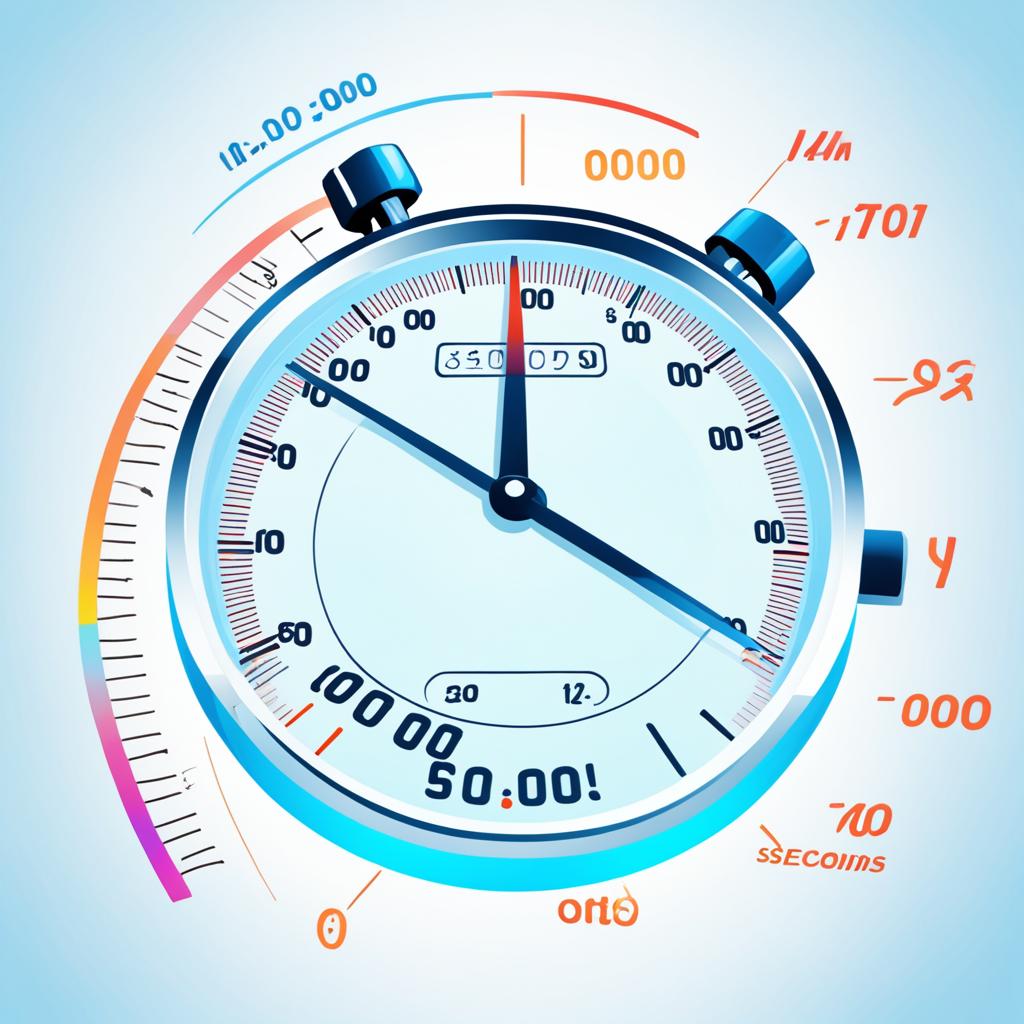Have you ever wondered how quickly light can travel within a short distance, such as 1 foot? You might believe that light travels instantaneously or at an incredibly fast rate, but the reality may surprise you. Understanding the speed of light and its travel time is not only fascinating but also crucial in various scientific fields. So let’s delve into the world of light travel and discover the answer to this intriguing question.
The speed of light in a vacuum is approximately 299,792,458 meters per second (m/s) or 670,616,629 miles per hour (mph). It is the fastest speed in the universe and is considered a constant. But how long does it take for light to cover just 1 foot? Is it truly instantaneous or does it take a fraction of a second? Let’s explore the distance light can travel in a specific period of time and find out the surprising answer.
The Speed of Light: Scientifically Proven Maximum Speed

The speed of light is scientifically proven to be the maximum speed in the universe. No matter how hard you try, it is impossible to exceed this speed within this universe. The speed of light is constant in a vacuum and is always approximately 299,792,458 m/s or 670,616,629 mph.
It is important to note that the speed of light can vary when it travels through different mediums, such as air or water, which causes the refraction of light.
When light travels through different mediums, its speed can vary due to the phenomenon known as refraction. The speed of light in a vacuum remains constant, but when it passes through materials like air or water, it undergoes a change in direction and speed.
How to Calculate the Speed of Light

To calculate the speed of light, you need to determine the distance that light can travel in a specific time period. This involves calculating the speed of light, the time traveled by light, and using the speed of light formula to determine the distance covered. Let’s break it down step by step:
- Step 1: Determine the speed of light. The speed of light in a vacuum is approximately 299,792,458 meters per second (m/s).
- Step 2: Measure the time traveled by light. For example, if you know the time traveled by light is 100 seconds.
- Step 3: Apply the speed of light formula. Use the formula: distance = speed of light × time. In our example, the calculation would be:
distance = 299,792,458 m/s × 100 s. - Step 4: Calculate the distance traveled by light. By multiplying the speed of light by the time traveled, you can determine the distance covered. In our example, the distance would be 29,979,245,800 meters.
So, by following these steps, you can calculate the speed of light based on the time traveled and determine the distance it covers. This calculation is crucial in understanding the vast distances light can travel and its incredible speed.
The Speed of Light in a Vacuum vs. Through Different Mediums

The speed of light in a vacuum is an astonishing 299,792,458 meters per second (m/s) or 670,616,629 miles per hour (mph). It is the fastest speed in the universe and remains constant, regardless of any external factors. However, when light travels through different mediums, such as air or water, its speed can vary.
Refraction of light is a phenomenon that occurs when light passes through substances with different optical densities, causing its path to bend. This change in direction affects the speed at which light travels in these mediums. For example, light travels faster in air than in water due to the difference in refractive indexes between the two substances.
The refractive index is a measure of how much a medium can change the speed of light compared to its speed in a vacuum. It is calculated by dividing the speed of light in a vacuum by the speed of light in the medium. A higher refractive index indicates a slower speed of light in that particular medium.
When light passes through a medium with a higher refractive index, it slows down and changes direction accordingly. This bending of light is what allows us to see objects that are submerged in water and causes optical illusions, such as the apparent bending of a straw in a glass of water.
Understanding the speed of light in a vacuum and how it changes when passing through different mediums is vital for various scientific fields, including optics, astronomy, and telecommunications. By studying the behavior of light under different conditions, scientists can develop technologies and explore the mysteries of the universe.
Fascinating Distances Traveled by the Speed of Light
The speed of light in a vacuum allows us to measure astronomical distances in the vast expanse of the universe. It takes light years to travel from distant stars to reach us, enabling us to observe and study the history of the universe through these distant objects. The distance between Earth and the Sun, known as an astronomical unit (AU), is approximately 499 seconds or 8.317 minutes of light travel time.
To put it into perspective, imagine this: light can travel an astonishing 17,987,547,480 meters, which equates to roughly 448 times around the Earth, in just one minute. This mind-boggling distance showcases the incredible reach and significance of the speed of light.
By understanding these immense distances, scientists are able to unravel the mysteries of the universe and gain insights into its formation and evolution. The light travel time allows us to peer into the past and explore the wonders of the cosmos, all thanks to the speed of light.


